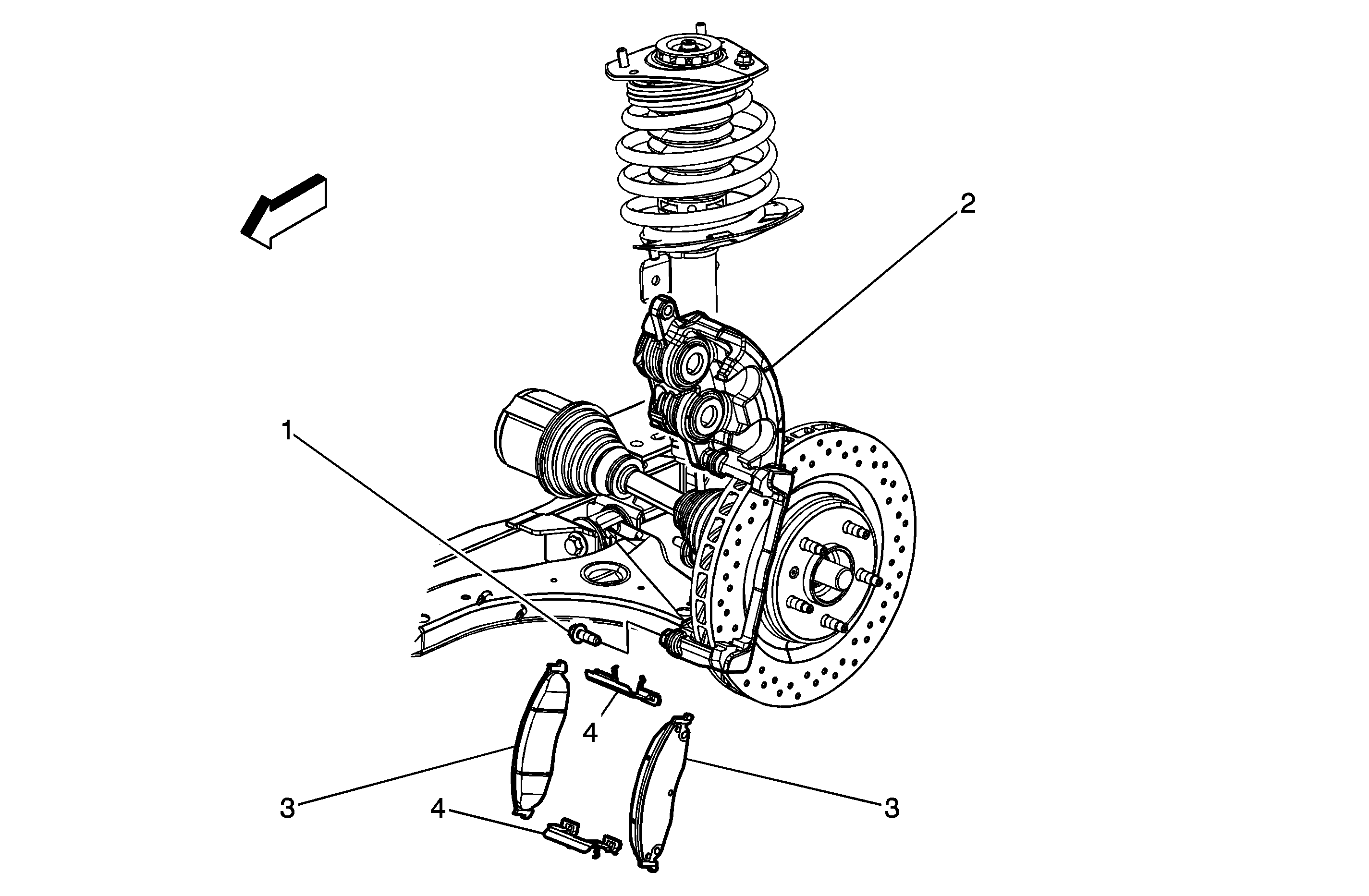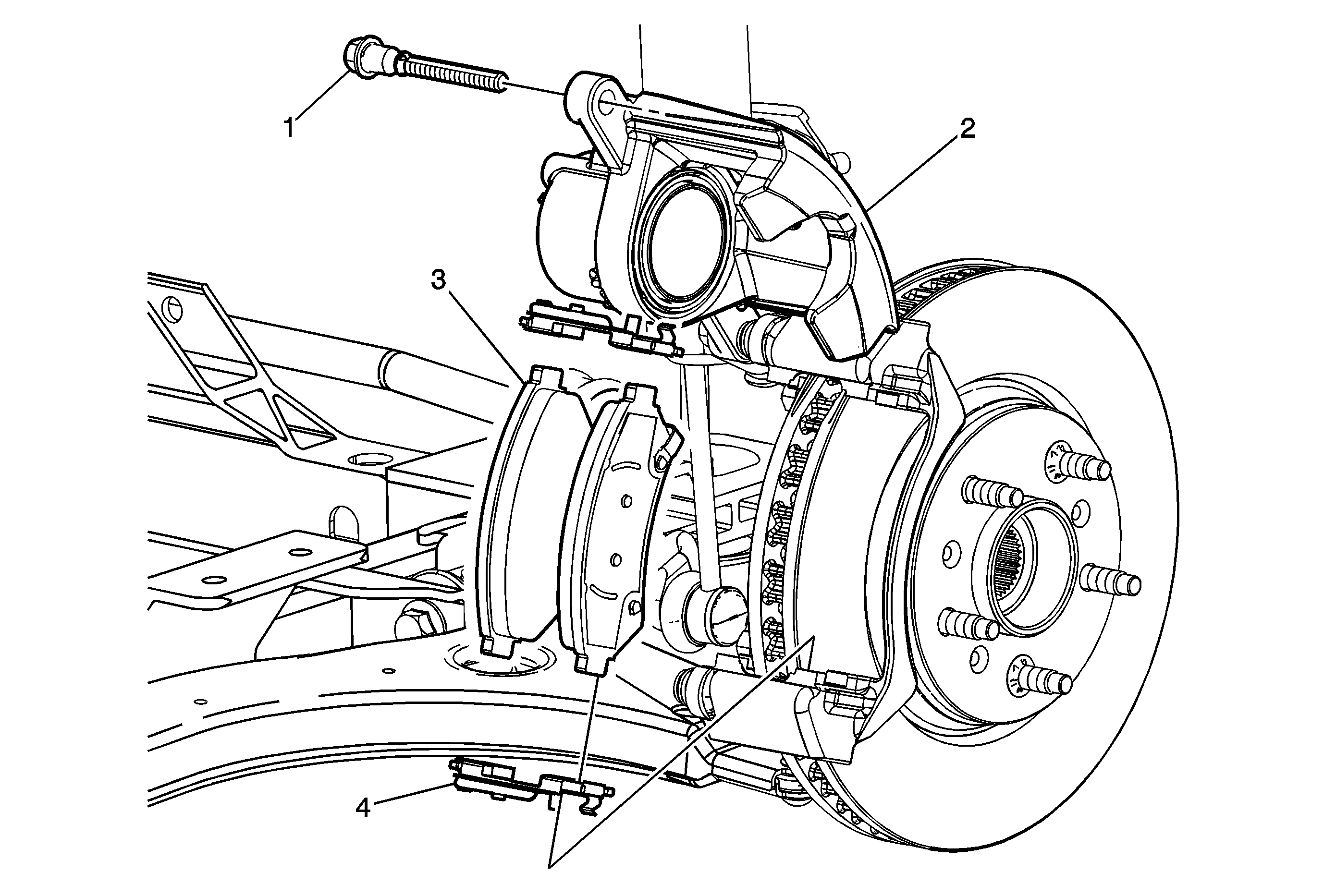Front Disc Brake Pads Replacement Z7U

Callout | Component Name | ||||||
|---|---|---|---|---|---|---|---|
|
Caution: Refer to Brake Dust Caution in the Preface section. Notice: Support the brake caliper with heavy mechanic wire, or equivalent, whenever it is separated from its mount and the hydraulic flexible brake hose is still connected. Failure to support the caliper in this manner will cause the flexible brake hose to bear the weight of the caliper, which may cause damage to the brake hose and in turn may cause a brake fluid leak. Preliminary Procedures
| |||||||
1 | Bolt, Brake Caliper Pin Notice: Refer to Fastener Notice in the Preface section. Tighten | ||||||
2 | Caliper, Brake Tip
| ||||||
3 | Pads, Disc Brake | ||||||
4 | Retainer, Brake Pad Spring (Qty: 2) Tip
| ||||||
Front Disc Brake Pads Replacement J65, JL9

Callout | Component Name | ||||||
|---|---|---|---|---|---|---|---|
|
Caution: Refer to Brake Dust Caution in the Preface section. Notice: Support the brake caliper with heavy mechanic wire, or equivalent, whenever it is separated from its mount and the hydraulic flexible brake hose is still connected. Failure to support the caliper in this manner will cause the flexible brake hose to bear the weight of the caliper, which may cause damage to the brake hose and in turn may cause a brake fluid leak. Preliminary Procedures
| |||||||
1 | Bolt, Brake Caliper Guide Pin (Qty: 1) Notice: Refer to Fastener Notice in the Preface section. Tighten | ||||||
2 | Caliper, Brake Tip
| ||||||
3 | Pads, Brake | ||||||
4 | Shims, Brake Pad (Qty: 2) Tip
| ||||||
